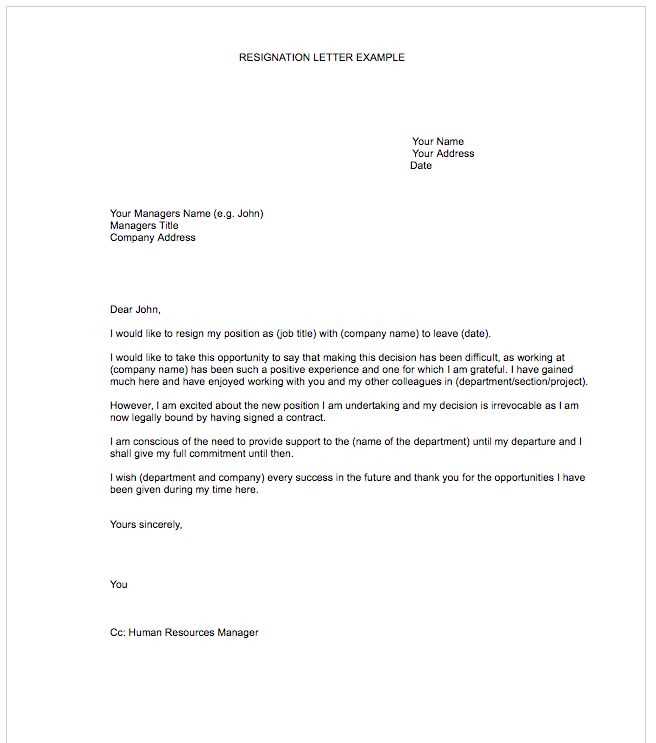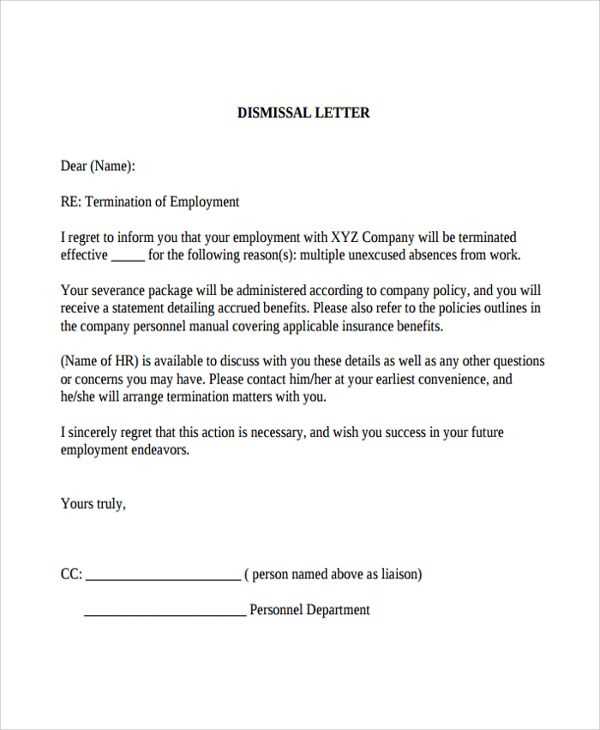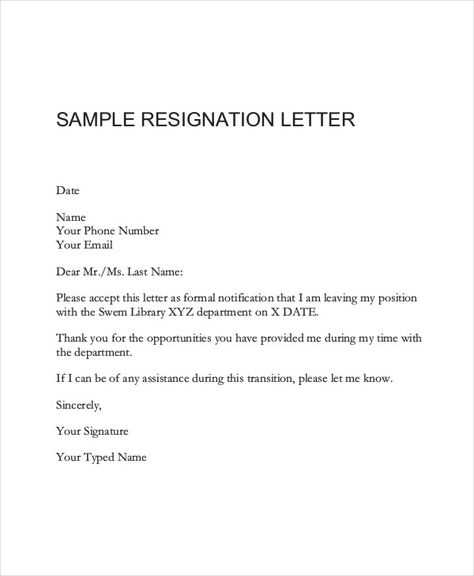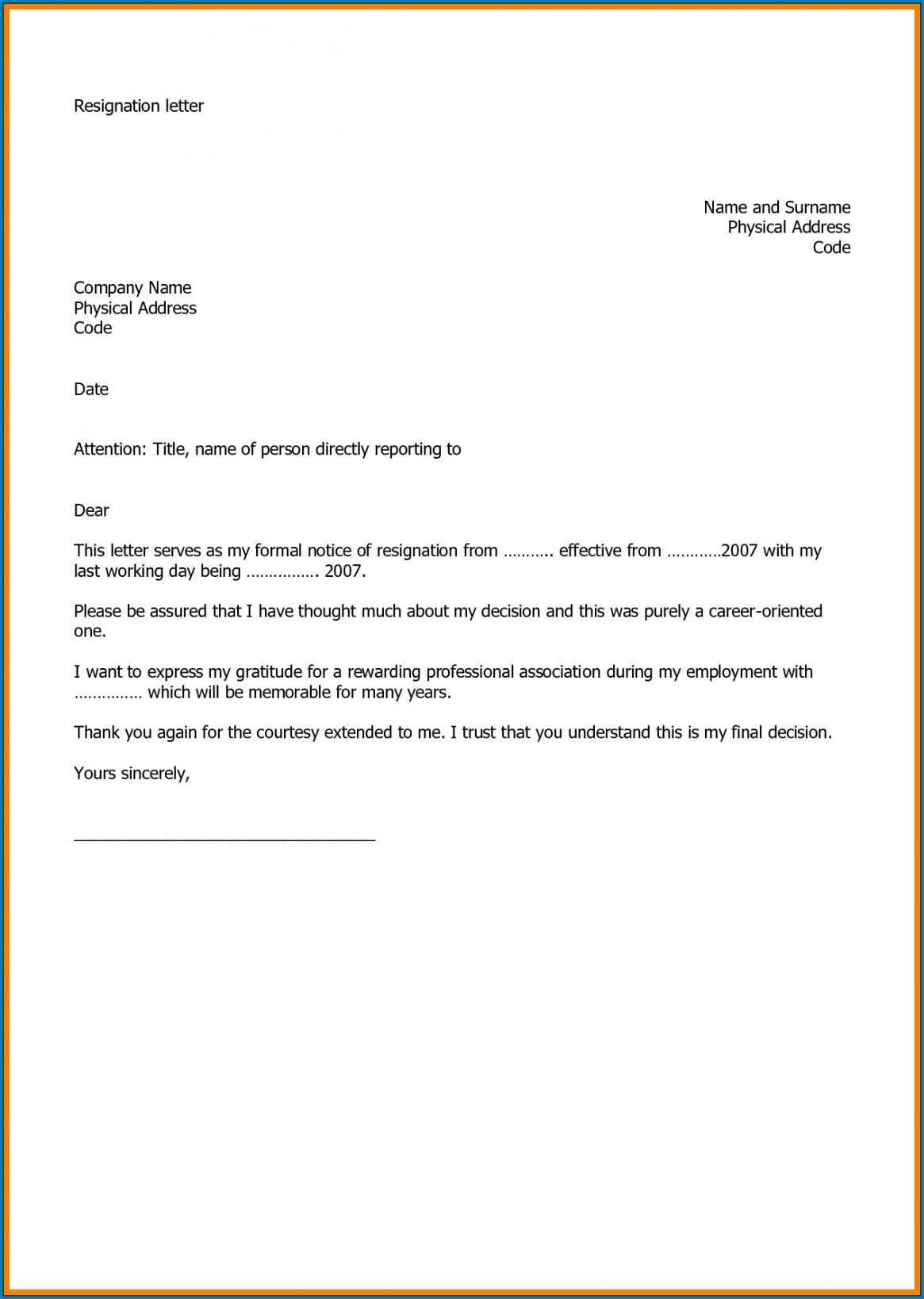Constructive Dismissal Resignation Letter Template

Leaving a job due to unfair treatment can be a difficult and emotional decision. In some cases, employees feel forced to step away because their employer’s actions have made their work life unbearable. Understanding your rights and how to formalize your departure is crucial when facing such situations.
In this guide, we will walk you through the process of communicating your decision to leave, ensuring that your reasons for doing so are clearly stated. A well-structured formal communication can help protect your interests and maintain professionalism, even when parting ways under challenging circumstances.
Taking the proper steps to express dissatisfaction with your work conditions can provide you with a clear record of events and demonstrate that you acted in good faith. This approach will help you navigate the next steps in your career while keeping legal protections in mind.
What is Constructive Dismissal?
When an employee feels forced to leave their job due to the employer’s actions, it is considered a serious matter. In many instances, the work environment has become intolerable because of unfair treatment, breaches of contract, or other factors that make it impossible for the employee to continue. Understanding when such a situation arises is crucial in determining your next steps.
Common Signs of Unfair Treatment
In many cases, the employer’s behavior can lead to an atmosphere where the employee feels they have no choice but to resign. This can include things like unpaid wages, constant bullying, harassment, or sudden, unexplained changes in job duties that affect your ability to perform. Recognizing these signs early can help you protect your rights before making any decisions.
Legal Considerations for Employees
If you find yourself in this situation, it’s important to know that the law often provides protection for employees who are forced out of their positions. While leaving under such conditions can feel daunting, knowing that you have legal options will allow you to make informed choices about how to proceed and safeguard your interests moving forward.
Understanding Your Rights in the Workplace
Knowing your rights as an employee is essential when dealing with workplace disputes or issues. Employers are legally obligated to provide a safe and fair environment for their workers. If this standard is not met, employees may be entitled to take action. Understanding these rights ensures that you can navigate any challenges effectively while protecting your interests.
- Right to a Safe Working Environment – Employers must ensure that their employees are not subjected to dangerous or unhealthy conditions.
- Protection Against Unfair Treatment – Employees have the right to be free from discrimination, harassment, or bullying based on protected characteristics.
- Contractual Rights – Employers are obligated to uphold the terms of the employment contract, including wages, benefits, and working hours.
- Right to Fair Process – Employees have the right to fair treatment when it comes to discipline or dismissal, including proper notice and procedures.
It is important to document any incidents that affect your ability to work, as this information can be valuable if you ever need to take formal action or seek legal support. By staying informed about your rights, you can make well-informed decisions about your career path, even in difficult circumstances.
When to Use a Resignation Letter
Knowing when and why to formally notify your employer of your decision to leave is essential in ensuring the process is handled professionally and legally. This step is particularly important when an employee’s working conditions have become untenable, and they feel they have no other option but to part ways. A formal notification helps establish a clear record and can protect you from potential misunderstandings or legal complications.
Recognizing Unacceptable Work Conditions

If the work environment has become unbearable due to unfair treatment, unfulfilled contractual obligations, or toxic behavior, it may be time to take formal action. While it can be difficult to make the decision to leave, documenting your concerns and submitting a formal notice is a way to protect your rights. In situations where you feel forced out, it is important to explain the reasons clearly in your communication to avoid confusion.
Legal Protection and Professionalism
Sending a well-written formal notification can help ensure that you leave on professional terms while also protecting your legal rights. By clearly stating your reasons for stepping away from the position, you not only document your side of the story but also demonstrate that you have acted responsibly. It is an important step to take if you believe that your working conditions are no longer sustainable.
Identifying Signs of Constructive Dismissal
It’s essential to recognize when the working conditions have become so unbearable that leaving your job seems like the only option. In some cases, your employer’s actions can create an atmosphere where staying at work is no longer feasible. Identifying these warning signs early can help you assess your situation and decide whether formal action is necessary.
Unfair Treatment and Harassment
One of the most common signs that the work environment has become unmanageable is consistent mistreatment. This could include verbal abuse, bullying, or discrimination, which make it difficult for you to perform your job. If you are subjected to these behaviors without any form of intervention from your employer, it may indicate a serious issue with your working conditions.
Changes in Job Role or Contractual Breaches

Another key indicator is a significant alteration in your role or responsibilities without proper communication or agreement. If your employer suddenly changes your job duties or fails to honor the terms of your employment contract, this could create a situation where leaving becomes a logical step. It’s important to document these changes as they may impact your legal standing.
How to Write a Resignation Letter

When you decide to leave your current job, it’s important to communicate your decision in a clear, professional manner. A formal document serves as an official notice to your employer, explaining your intent to step down and detailing the reasons, if necessary. Writing a concise and respectful message can help maintain your professional reputation and ensure there are no misunderstandings about your departure.
Start by addressing your supervisor or HR representative directly. State the date you plan to leave, and ensure that your tone remains polite and professional throughout the document. If you feel comfortable, briefly explain the reason for your departure, but avoid using negative language. If you were forced into this decision due to workplace issues, it’s important to remain factual and avoid emotional statements.
Conclude your message by expressing gratitude for the opportunity to work with the company, and offer to help with the transition if needed. This positive approach leaves the door open for future opportunities and ensures that your departure is as smooth as possible.
Key Elements to Include in Your Letter
When you decide to formally notify your employer of your intention to leave, it’s crucial to include specific details that provide clarity and professionalism. A well-structured message ensures that both you and your employer are on the same page regarding your departure. Below are the key components to include in your formal communication:
| Element | Description |
|---|---|
| Date of Departure | Clearly state the date when your employment will end, allowing your employer to prepare for the transition. |
| Reason for Leaving | Briefly mention the reason for your departure, keeping it professional and factual if necessary. |
| Appreciation | Express gratitude for the opportunities and experiences you’ve had during your time at the company. |
| Offer to Assist with Transition | Indicate your willingness to help during the handover process to ensure a smooth transition. |
Including these elements helps make your communication clear and respectful, ensuring that your departure is handled professionally, and it leaves a positive impression with your employer.